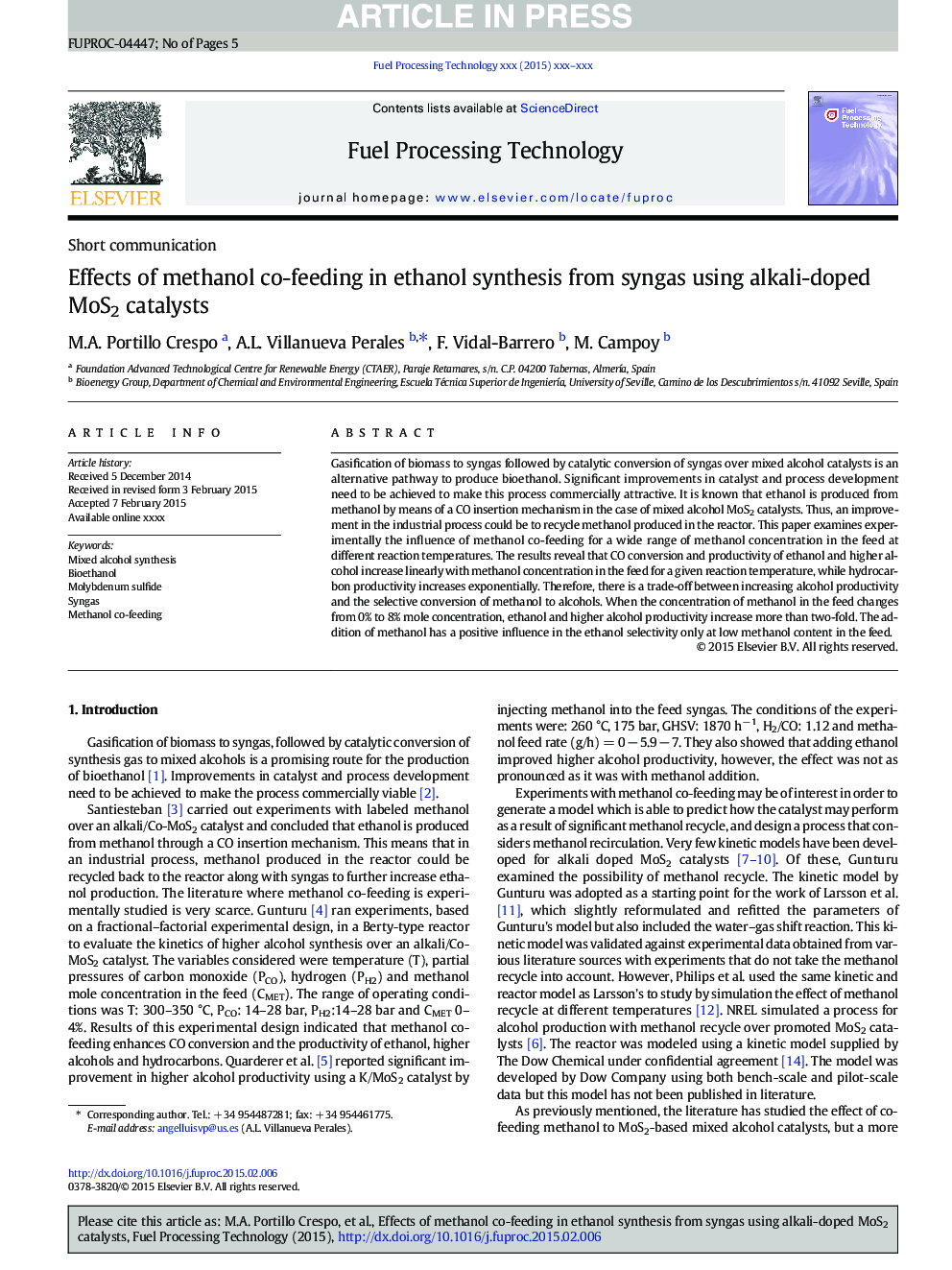| Article ID | Journal | Published Year | Pages | File Type |
|---|---|---|---|---|
| 6657053 | Fuel Processing Technology | 2015 | 5 Pages |
Abstract
Gasification of biomass to syngas followed by catalytic conversion of syngas over mixed alcohol catalysts is an alternative pathway to produce bioethanol. Significant improvements in catalyst and process development need to be achieved to make this process commercially attractive. It is known that ethanol is produced from methanol by means of a CO insertion mechanism in the case of mixed alcohol MoS2 catalysts. Thus, an improvement in the industrial process could be to recycle methanol produced in the reactor. This paper examines experimentally the influence of methanol co-feeding for a wide range of methanol concentration in the feed at different reaction temperatures. The results reveal that CO conversion and productivity of ethanol and higher alcohol increase linearly with methanol concentration in the feed for a given reaction temperature, while hydrocarbon productivity increases exponentially. Therefore, there is a trade-off between increasing alcohol productivity and the selective conversion of methanol to alcohols. When the concentration of methanol in the feed changes from 0% to 8%Â mole concentration, ethanol and higher alcohol productivity increase more than two-fold. The addition of methanol has a positive influence in the ethanol selectivity only at low methanol content in the feed.
Related Topics
Physical Sciences and Engineering
Chemical Engineering
Chemical Engineering (General)
Authors
M.A. Portillo Crespo, A.L. Villanueva Perales, F. Vidal-Barrero, M. Campoy,
